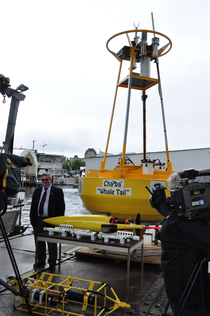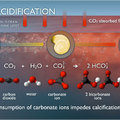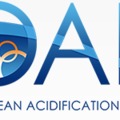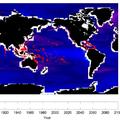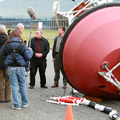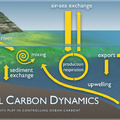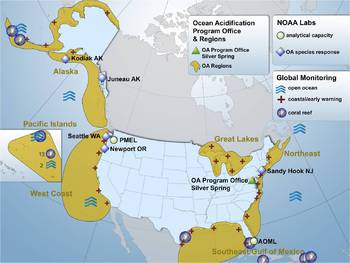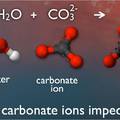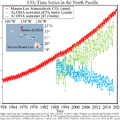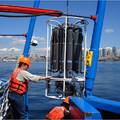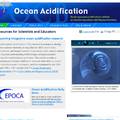Strategy for OA Observations
PMEL is developing a global network of ocean acidification observations
The existing global carbon observatory network of repeat hydrographic surveys, time-series stations and ship-based underway surface observations in the open ocean provide a strong foundation of carbon chemistry observations to begin addressing the problem of ocean acidification. Indeed, much of our present understanding of the long-term changes in the carbon system is derived from the repeat ocean sections and time-series measurements.
A major project for our group is to expand the global moored and ship-based network by adding pH and other biogeochemical measurements to provide important information on the changing conditions in the open ocean and coastal waters. See the map of planned monitoring sites to the right. This network will provide a better understanding of the temporal and spatial scales of variability in ocean carbon chemistry and biology and the observational basis for developing predictive models for future changes in ocean acidification and its consequences for marine ecosystems.
U.S. coastal and estuarine environments do not currently have coordinated carbon observing networks, as in the open ocean, and are presently grossly under-sampled. There is a critical need for intensive time series measurements on moored buoys and repeat hydrographic cruises in high productivity coastal and estuarine systems as CO2 and carbonate ion concentrations in these waters can vary substantially on timescales from hours to decades due to tides, photosynthesis, and river or ground water inputs. In response to that need, we are adding carbon and pH sensors to open ocean and coastal moorings, including in and around our home watershed Puget Sound, and establishing ship-based sampling programs to better understand the combined effects of ocean acidification and other natural and anthropogenic processes in dynamic estuarine and coastal environments.
See the links below to learn more about ocean acidification and the type of research our group is involved in.

